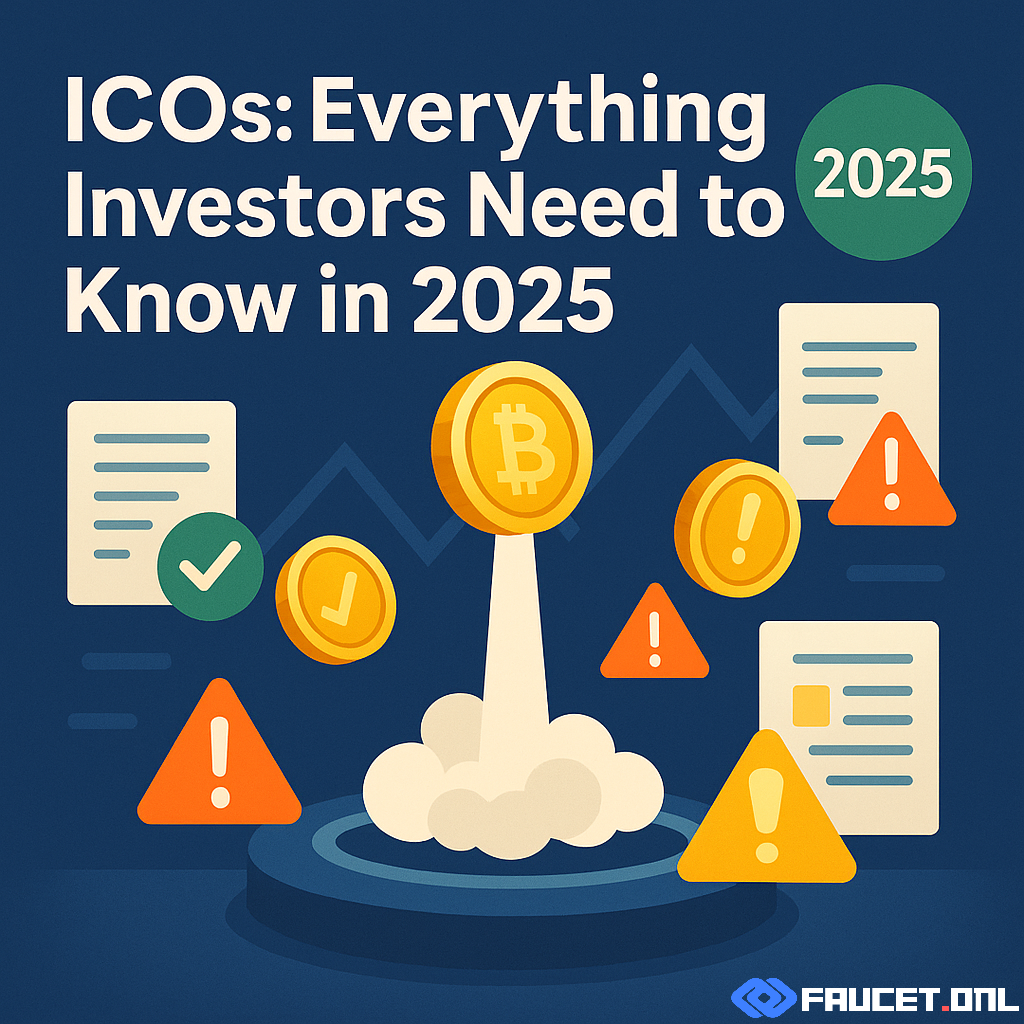What’s an ICO?
An Initial Coin Offering (ICO) is a fundraising mechanism used by crypto projects to raise capital by issuing new digital tokens. In exchange for established cryptocurrencies like Bitcoin or Ethereum, investors receive project-specific tokens, often with the promise of future utility or access within a new ecosystem. ICOs emerged as a fast, global alternative to traditional venture capital, enabling developers to attract widespread funding in a matter of days or weeks.
ICOs differ from IPOs (Initial Public Offerings) in several ways—most notably, participants usually don’t acquire equity or ownership in the underlying company. Instead, their tokens may be used for network participation, access to services, or as speculative assets traded on exchanges.
How ICOs Work
The typical ICO process involves a project publishing a whitepaper that outlines its vision, tokenomics, team credentials, roadmap, and use cases for the new token. Interested investors send crypto funds to a designated smart contract address during the ICO window, receiving the new tokens in return—often at a fixed or variable exchange rate.
After the fundraising period, tokens are distributed, and the project team uses the collected capital to develop and launch the platform or service. Tokens may become tradable on crypto exchanges, with their value driven by market speculation, demand, and project milestones. Increasingly, ICOs include KYC (Know Your Customer) and AML (Anti-Money Laundering) procedures, reflecting growing regulatory oversight.
Risks and Rewards of ICOs
ICOs can offer substantial rewards—early access to groundbreaking projects and the potential for significant price appreciation. Many of today’s leading crypto platforms, such as Ethereum and Solana, started with ICOs. However, the risks are considerable:
- Lack of Regulation: Unlike IPOs, ICOs have historically operated in legal gray zones, increasing the potential for fraud or project failure.
- Rug Pulls and Scams: Unscrupulous teams have absconded with investor funds, leaving “worthless” tokens behind.
- Volatility: Even legitimate tokens often experience dramatic price swings after launch.
- Information Asymmetry: Limited transparency can make due diligence challenging.
- Regulatory Risk: New rules or enforcement actions can restrict ICO participation or devalue tokens overnight.
ICOs in 2025: Trends and Developments
The ICO landscape has matured significantly by 2025. Today, successful ICOs typically feature:
- Rigorous Legal Compliance: Most reputable projects now conduct full KYC/AML screening and seek legal opinions before launching.
- Transparent Teams and Roadmaps: Investors expect doxxed (public) teams, audited code, and detailed timelines before committing funds.
- Hybrid Models: Many ICOs are now structured as IDOs (Initial DEX Offerings) or IEOs (Initial Exchange Offerings), leveraging decentralized or centralized exchanges to provide more secure and transparent launches.
- Focus on Utility: Token sales emphasize genuine utility and adoption within active platforms, rather than speculative hype.
- Cross-Border Participation: Improved legal clarity in regions like the EU and Asia opens new markets for compliant ICOs.
Tips for Curious ICO Investors
- Always Read the Whitepaper: Look for clear goals, realistic roadmaps, transparent funding allocation, and identifiable team members.
- Check for Regulatory Compliance: Ensure the ICO follows local and international laws, including KYC/AML checks.
- Assess Community Engagement: Healthy projects foster active, transparent communication on social media, forums, and GitHub.
- Beware of Unrealistic Promises: If returns sound too good to be true, exercise extra caution.
- Diversify and Limit Exposure: Don’t commit more funds than you can afford to lose, and spread investments across multiple projects.
Conclusion
ICOs remain a powerful tool for crypto innovation, but the landscape in 2025 is more regulated and investor-friendly than in the past. By understanding how ICOs work, recognizing their risks and rewards, and focusing on well-structured, compliant projects, you can make informed decisions and potentially benefit from the next wave of blockchain breakthroughs.



